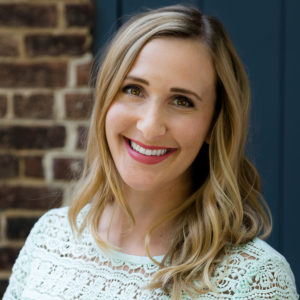The American Institute of Architecture Students (AIAS) is celebrating the 60th anniversary of student excellence in leadership, service, and design. In honor of our 60th year, the AIAS is excited to share 60th: Legacy, an ongoing weekly celebration of and thanks to our alumni sponsored by Professional Publications, Inc (PPI). PPI is a publisher of professional licensing exam materials since 1975 and wants to recognize those who have helped the AIAS achieve 60 years of success.

Name
Ashley Respecki, Assoc. AIA
Organization
The American Institute of Architects
Title
Account Director, Brand & Creative
Connect
Twitter | Instagram | LinkedIn | Website
Bio
I’m currently an account director for the Brand & Creative team at The American Institute of Architects, the primary non-profit member association for architects, in Washington, DC. Our team manages the AIA brand, large marketing campaigns, and creative services for AIA products and programs. I develop creative strategies and marketing plans, and manage design production and implementation. I coordinate anything from printing and fabrication to our work with creative agency, freelance, and video production partners.
I received a Master of Architecture and Bachelor of Science in Architecture from Ball State University, where I volunteered as AIAS chapter president. Later, I volunteered nationally as AIAS Midwest Quadrant Director and represented the student perspective on several NAAB visits. So it wasn’t too odd when I graduated mid-recession and inadvertently found myself veering down an alternative career path.
In my first position at AIA, I developed career resources, managed volunteer committees, and advocated for the advancement of emerging professionals in architecture. Luckily, that meant I got to spend a lot of time with the architecture community and the collateral organizations, including AIAS. But I missed design and thought I could make a different type of impact in the organization and profession. I quickly found myself working on creative pursuits once again, this time in marketing.
Today, I manage a number of marketing efforts, but the largest is marketing and promotion for the AIA Conference on Architecture. The conference is AIA’s largest event and attracts approximately 20,000 architects, designers, and building product manufacturers annually. I help develop our annual promotional strategy, and project manage almost every single asset you see related to the conference—from the website to every email, print and digital ad, onsite signage, and even AIA’s 8,000 sq. ft. expo booth. We’ll be in New York City in June 2018 and hopefully we’ll see you there!
ARE Prep Tip: What is one piece of advice that you would give to those starting to test?
Don’t be afraid to get started, no matter how little firm experience you might have. I started the exam while in a non-traditional job with only one internship under my belt and passed the first two exams I took: Schematic Design and Structures. (But, full disclosure, I then failed Construction Documents & Services and ultimately realized I was probably no longer on a path to becoming a licensed architect. To each their own!)

How did your experience with AIAS help you to achieve your goals?
Without my volunteer experience and being a part of the AIAS family I don’t think I would have known, or truly understood, AIA and the collateral organizations—and that’s the universe I work in every day now. It’s fair to say I owe the start of my career to my AIAS experience; without my peers and mentors in the profession I wouldn’t be where I am today (even if it isn’t where I thought I’d be when I first started my architecture journey).
How can someone best change the world?
At AIA headquarters, you’ll see a giant sign on second floor with a simple tagline that reads, “Designing a better world.” That’s what architects do every single day. It’s lofty and overwhelming, but true. Even seemingly tiny decisions made in the design and construction of a building have ripple effects and impact other human beings every day. Because changing the world is inherent to the professions’ output, it’s important that architects continue to seek new information and better understand the world around them: read, watch the news, explore other communities, experience other cultures, and never stop learning and iterating in both your personal and professional life.
How can someone be a better designer?
We can all become better designers by learning from and respecting the tangential design and construction professions. For example, architects often assume they’re “master designers” and are quick to add things like graphic design or interior design to their resume. At AIA, I’ve had the opportunity to work with incredibly talented, non-architect designers and problem solvers and have humbly discovered that architects are actually not design “know-it-alls.” My recommendation? Trust the expertise of your professional peers. For me in my current position, it’s trusting and appreciating the work of trained graphic designers, photographers, and illustrators, but in an architecture firm, it’s the engineers, contractors, landscape architects, and interior designers.
How do you define work-life balance and how is it achievable?
I’m a millennial and much has been said/written about millennials not seeing a boundary between work and home life. I’m definitely guilty of that. My husband and I now both work for architecture collaterals and bring way too much industry talk home. But I don’t think either of us would have it any other way. I have no idea what I’d talk to an accountant about over dinner, or what kind of vacations I’d take if I wasn’t married to an architect. So if work and “life” are separate for you, that’s great; and if they’re not, I think it’s up to you to find the best way to create the time and mental space for the things you enjoy outside of architecture and design. Those other things you love (from people down to your hobbies, etc.) will almost always help you become a better architect and world citizen.
What is a decision or action you made in school that influenced your trajectory?
The decision to be a part of AIAS absolutely changed my career trajectory. For me, it highlighted what I was good at, and what I wasn’t good at. I realized that my life truly did happen outside of the studio (a classic AIAS tagline). I enjoyed talking to people and working through problems together, and recognized that with a network of diverse peers I could better understand, and hopefully impact, the world around me. And while my trajectory isn’t what I thought it would be when I wrote my career goals down in 3rd grade, or when I walked through the doors of the architecture building on campus freshman year, the process of working with my peers to impact change in the profession—big or small—and the rewards in doing so are how I know I’m doing the right thing every day in my career.











